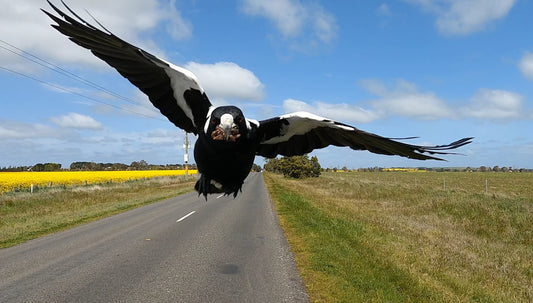David Rossi is about to take off on an epic bike tour around Europe. Read on as he takes us through how he went about preparing for a bike tour – everything from the training to the essential gear.
David: I'm about to set off on what should be the adventure of a lifetime, taking the scenic route from the north of England to the south of Italy, on the new Reid Granite. It's an adventure that I've dreamt of for years - to explore Europe with the freedom to roam, riding as much or as little as I like each day, relying on the kindness of strangers for accommodation or camping where appropriate.
Some think that only a seasoned professional could travel across Europe on a bike, but with the right motivation and a bit of preparation, the world is anyone's oyster. On a tour last year along the Great Ocean Rd, I met people from all walks of life, from all over the world, who were riding day after day experiencing a beautiful part of the world.
Bike touring can be tailored to suit any rider's sense of adventure, preference for creature comforts, and endurance; from guided tours and credit card touring for a weekend or a few weeks, to completely self sufficient and almost endless tours across continents and around the world.
Training for a tour
For me, cycling has been a way to get around, commuting to work as often as possible, and a way to catch up with friends on social weekend rides. My training focus this year was simply to ride as often as possible. To achieve this I’ve been commuting 2 or 3 days a week (a great way to get extra distance under your belt), and a going on a longer fast paced ride at least every second weekend.
Strava, a great app for tracking and sharing your rides, tells me I've covered a little over 5000km so far this year. I feel quite prepared taking into consideration the extra weight I’ll be carrying on tour and the distance. Touring is done at a much more comfortable pace, really as slow as you like.
The best bike for touring
It's been proven that you can tour on almost any bike, but there is a category of bikes designed to cover long distances and carry the extra gear you'll want to bring. A touring bike usually has a more relaxed and comfortable design than a bike designed purely for speed, and will have the ability to add bag racks to at least the rear, and possibly the front. To allow you to carry the extra weight and maintain a comfortable cadence, a touring bike will usually have a wide range of gears, with a focus on very low ratios.
While some prefer to tour with the efficiency of cleated bike-specific shoes, and others the comfort and simplicity of sneakers, there is the option of combination pedals for the best of both worlds.
Because the road less travelled is often not the smoothest, a touring bike will have wider, harder wearing tyres than a road bike, and with some tread for grip (but not as wide or knobbly as mountain bike tyres). To assist stopping with the extra weight and even in wet conditions, touring bikes are trending towards disc brakes.
The new Reid Granite ticks all the boxes and even looks good doing it. It’s equipped with Shimano’s value Claris gears and drivetrain, and the well regarded TRP Spyre C disc brakes. It can take wide tyres up to 40mm, has front and rear rack and fender mounts, and fully enclosed cables.
Getting all that gear around
There are now two schools of thought on carrying gear on a bike. Firstly the more modern trend of bike-packing means using lightweight and often custom bags strapped on to the bike. This method is often associated with weekend or off-road adventures.
The other is the more traditional option of using racks and panniers, allowing for extra space to store all the gear required for long distance touring. I've opted for the latter and installed a rear rack to hold two large rear waterproof panniers and a handlebar bag.
One bag holds camping gear including tent, sleeping bag, and camping pillow. The other holds my clothes (2 sets of cycling kit, 1 casual outfit, underwear, thermals), first aid kit, toiletries and a basic toolkit. The handlebag bag holds my phone, charger, and lights, plus important things like my passport, wallet and keys. I'm strapping a sleeping mat on top of the rack, along with a solar USB charger.



